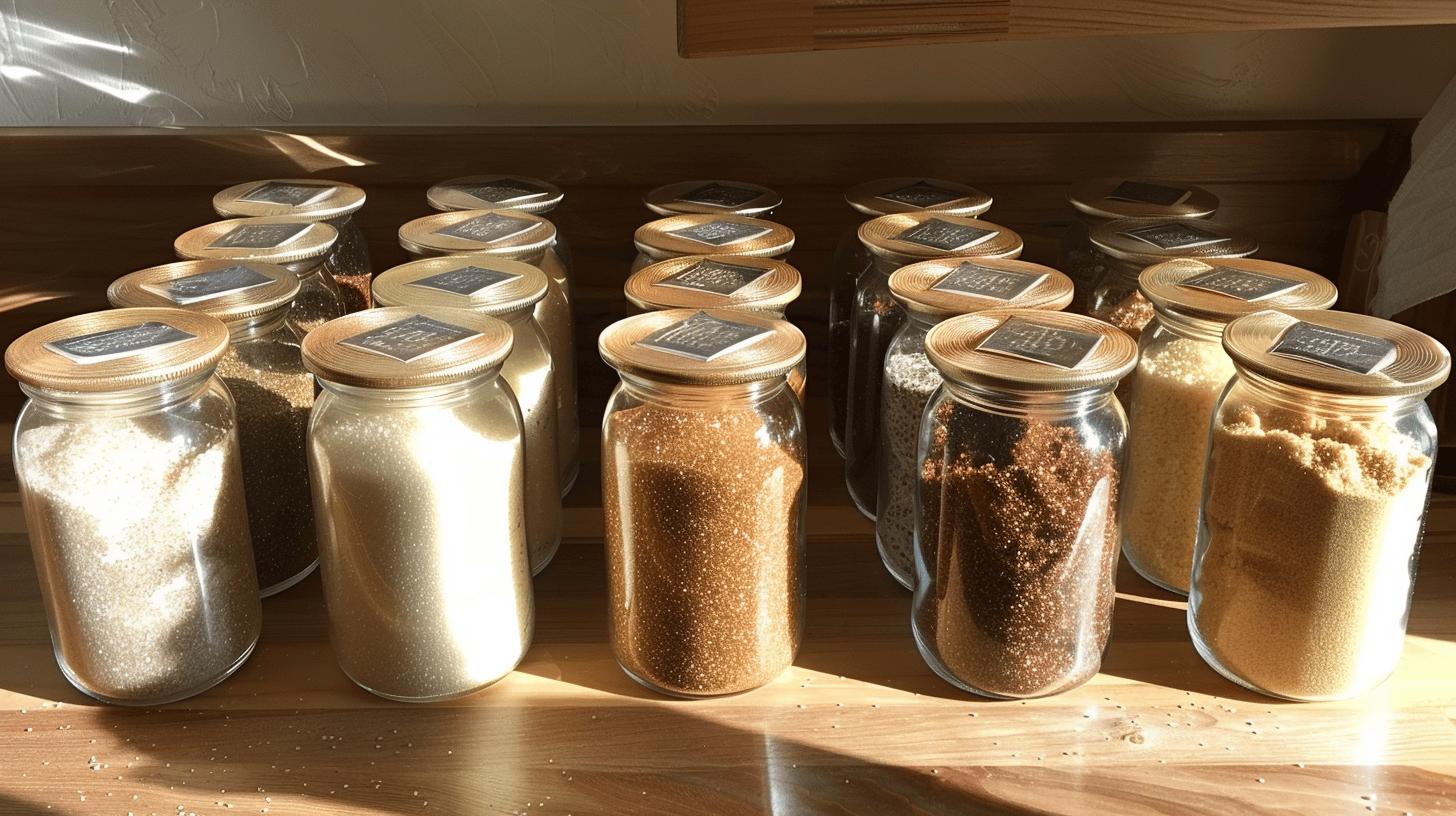How vital are the right sugar grades in producing high-quality products? For businesses relying on sugar, the answer is unequivocally crucial. Sugar grades determine not just the purity but also the granularity, impacting everything from flavor to consistency in large-scale applications. In this article, we'll explore how understanding these sugar grades is key to meeting the specific needs of industries such as food and beverage manufacturing. Dive in to discover how choosing the right grade of sugar can significantly boost your product quality and consumer satisfaction.
Understanding Sugar Grades and Their Importance

Sugar grades play a pivotal role in determining both the quality and application of sugar across various industries. The grading process involves assessing key parameters such as purity and grain size to meet specific culinary and industrial needs. High-grade sugars, known for their refined quality, are essential in recipes and manufacturing processes where consistent performance is crucial. For instance, in the beverage industry, the clarity and purity of sugar significantly impact the visual appeal and taste of the final product. Similarly, in food processing, the right sugar grade can enhance texture and ensure product stability. These factors make sugar grading an integral component of quality control, providing manufacturers and consumers with a reliable standard.
- Ensures consistent product quality
- Meets industry-specific requirements
- Affects flavor and texture in culinary uses
- Determines suitability for health-conscious products
- Guides industrial applications and innovations
In the food and beverage industries, sugar grading is crucial as it directly influences product development and marketability. High-grade sugars allow for precise flavor profiles and textures, catering to consumer expectations and preferences. Moreover, different grades impact pricing strategies and consumer choices, as higher purity often commands a premium. This grading system thus supports manufacturers in maintaining competitive standards, ensuring that products meet both regulatory and consumer demands effectively.
Different Grades of Sugar and Their Uses

The diversity of sugar grades caters to a wide array of culinary and industrial applications. Each type possesses unique characteristics that make it suitable for specific uses. This section examines the most common sugar types—granulated, caster, and powdered sugar—and their key applications in various settings.
Granulated Sugar
Granulated sugar, often referred to as table sugar, is the most ubiquitous form used in households and industries alike. Its versatility makes it an all-purpose sweetener, suitable for cooking, baking, and even preserving. The consistent crystal size allows for even distribution, making it ideal for recipes that require precise sugar measurements. This sugar type is the backbone of countless culinary applications, from sweetening beverages to enhancing the texture of baked goods.
Caster Sugar
Caster sugar, known for its quick-dissolving properties, is particularly beneficial in desserts and cocktails. The finer crystal size compared to granulated sugar enables it to dissolve rapidly, making it the preferred choice for meringues, syrups, and smooth-texture baked products. Its ability to blend seamlessly without leaving a gritty texture is crucial for achieving the delicate consistency required in certain recipes.
Powdered Sugar
Powdered sugar, also called confectioner's sugar, is distinguished by its ultra-fine texture. This characteristic makes it perfect for creating smooth icings and frostings, as well as for dusting over desserts for decorative purposes. Its inclusion of a small amount of cornstarch prevents clumping, ensuring that it remains free-flowing. The fine particles of powdered sugar allow it to integrate effortlessly into mixtures, providing a seamless finish to sweet treats.
| Sugar Type | Common Uses |
|—————–|————————————–|
| Granulated Sugar| Cooking, baking, preserving |
| Caster Sugar | Desserts, cocktails, baking |
| Powdered Sugar | Icings, frosting, decoration |
ICUMSA Grading: A Global Standard

The International Commission for Uniform Methods of Sugar Analysis (ICUMSA), established in 1897, plays a crucial role in setting global standards for sugar quality assessment. By developing a colorimetric grading system, ICUMSA evaluates sugar purity, influencing everything from production to international trade. This system is instrumental in categorizing sugar based on its color, a key indicator of purity, and is widely accepted in the sugar industry for maintaining consistency across different markets. ICUMSA's standards are pivotal in guiding manufacturers in producing sugar that meets stringent quality requirements, thus supporting fair trade practices and ensuring consumer satisfaction.
- Color measurement for purity
- Consistency in global sugar standards
- Efficiency in manufacturing processes
- Basis for consumer trust and product quality
ICUMSA 45, a notable grade within this system, represents sugar with exceptionally high purity and minimal color presence. It is considered the benchmark for premium quality sugar, commonly demanded in industries where the highest standards are necessary, such as in pharmaceuticals and high-end food products. The stringent criteria associated with ICUMSA 45 ensure that the sugar meets both regulatory and consumer expectations, making it a preferred choice in markets that prioritize quality. Consequently, ICUMSA grades not only affect product labeling but also play a significant role in determining pricing and marketability, highlighting their importance in the global sugar trade.
Evaluating Sugar Quality: Methods and Guidelines

Maintaining high sugar quality is crucial for ensuring that the end product meets both consumer expectations and regulatory standards. High-quality sugar is essential in various industries where consistency in taste, texture, and appearance is paramount. Effective quality control measures prevent defects and ensure that sugar products adhere to the required specifications, thus safeguarding consumer trust and satisfaction.
Traditional methods for evaluating sugar quality primarily involve assessing color, grain size, and purity. These methods include visual inspections and manual sampling, where sugar is compared against standard reference samples. Such techniques, though reliable, can be time-consuming and subject to human error, leading to inconsistencies in quality assessment.
Modern technologies, such as advanced spectrophotometric instruments like HunterLab, have revolutionized sugar quality control. These instruments provide real-time data and enable precise measurements of sugar's color and purity, enhancing the accuracy of quality assessments. By integrating these technologies into production lines, manufacturers can streamline quality control processes, reduce waste, and ensure that their products consistently meet high standards. This technological advancement not only benefits manufacturers by improving efficiency but also assures consumers of the superior quality of the sugar products they purchase.
Application of Sugar Grades in Different Industries

Sugar grades significantly influence product development in the food and beverage industries. High-grade sugars, such as ICUMSA 45, are preferred for their purity and consistency, which are critical in producing beverages like carbonated drinks and juices where clarity and taste are paramount. The precise grain size and purity ensure that the final product maintains an appealing appearance and flavor profile, crucial for consumer satisfaction. In baking, different sugar grades contribute to texture enhancement, providing the desired crumb structure and moisture retention in goods like cakes and pastries. Selecting the appropriate sugar grade allows manufacturers to optimize production processes and deliver high-quality products efficiently, balancing quality with cost-effectiveness.
- Sweetening in carbonated drinks
- Texture enhancement in baked goods
- Preservatives in canned products
- Flavor balance in sauces and dressings
- Coating in confectionery
- Stabilizers in medicinal syrups
In the pharmaceutical industry, sugar grades play a vital role as well. High-grade sugars are used as stabilizers in medicinal syrups, where the purity of sugar can impact the shelf life and efficacy of the product. The consistent quality of high-grade sugars ensures that active ingredients remain stable over time, providing reliable therapeutic effects. Additionally, these sugars aid in masking unpleasant tastes, enhancing the palatability of oral medications. The economic benefits of choosing the right sugar grade extend beyond cost savings; they also contribute to maintaining the integrity and effectiveness of pharmaceutical products, supporting both patient compliance and health outcomes.
Final Words
Navigating the complexities of sugar grades reveals their critical role in numerous industries. Recognizing their impact on purity, grain size, and application, businesses can make informed decisions regarding quality and pricing. Granulation level dictates sugar’s adaptability, from versatile granulated sugar to the highly refined ICUMSA 45.
These grades drive consistency in food processing and pharmaceuticals, ensuring products meet stringent standards. Advanced evaluation methods refine quality control, supporting manufacturers and consumers alike. Understanding sugar grades underscores their importance in achieving superior product performance and innovation across sectors.
FAQ
What are sugar grades and their importance?
Sugar grades are essential for determining sugar quality and application. Grading assesses purity and grain size, which fulfill specific culinary and industrial needs. High-grade sugars are preferred for their refined quality, ensuring consistent performance in recipes and manufacturing processes.
What are the different grades of sugar and their uses?
Granulated sugar, caster sugar, and powdered sugar are common types. Granulated sugar is versatile for general purposes. Caster sugar dissolves quickly, ideal for beverages and baking. Powdered sugar suits icing and frosting.
What is the healthiest type of sugar?
The healthiest sugar type varies based on personal dietary needs. Generally, less refined sugars like raw honey or pure maple syrup are considered better alternatives due to lower processing and higher nutrient content.
What are the classifications of sugars in chemistry?
In chemistry, sugars are classified as monosaccharides, disaccharides, and polysaccharides. Monosaccharides include glucose and fructose, disaccharides consist of sucrose and lactose, and polysaccharides are complex carbohydrates like starch.
Which type of sugar is healthiest for baking?
For baking, healthier sugar alternatives include coconut sugar or raw honey. These options provide a lower glycemic index and may add nutritional benefits without compromising the flavor or texture of baked goods.
How does ICUMSA grading impact sugar quality?
ICUMSA grading employs colorimetric analysis to measure sugar purity. It standardizes global sugar quality, providing consistency, efficiency, and consumer trust in the market. ICUMSA 45 indicates high purity with minimal coloration presence.
What methods are used to evaluate sugar quality?
Sugar quality evaluation involves measuring color, grain size, and purity. Traditional methods include visual assessments. Modern advancements use spectrophotometric tools for real-time, accurate quality data, benefiting both manufacturers and consumers.

